News
Emergency Personnel And WY Governor Provide Updates On Elk Fire At Public Meeting In Ranchester
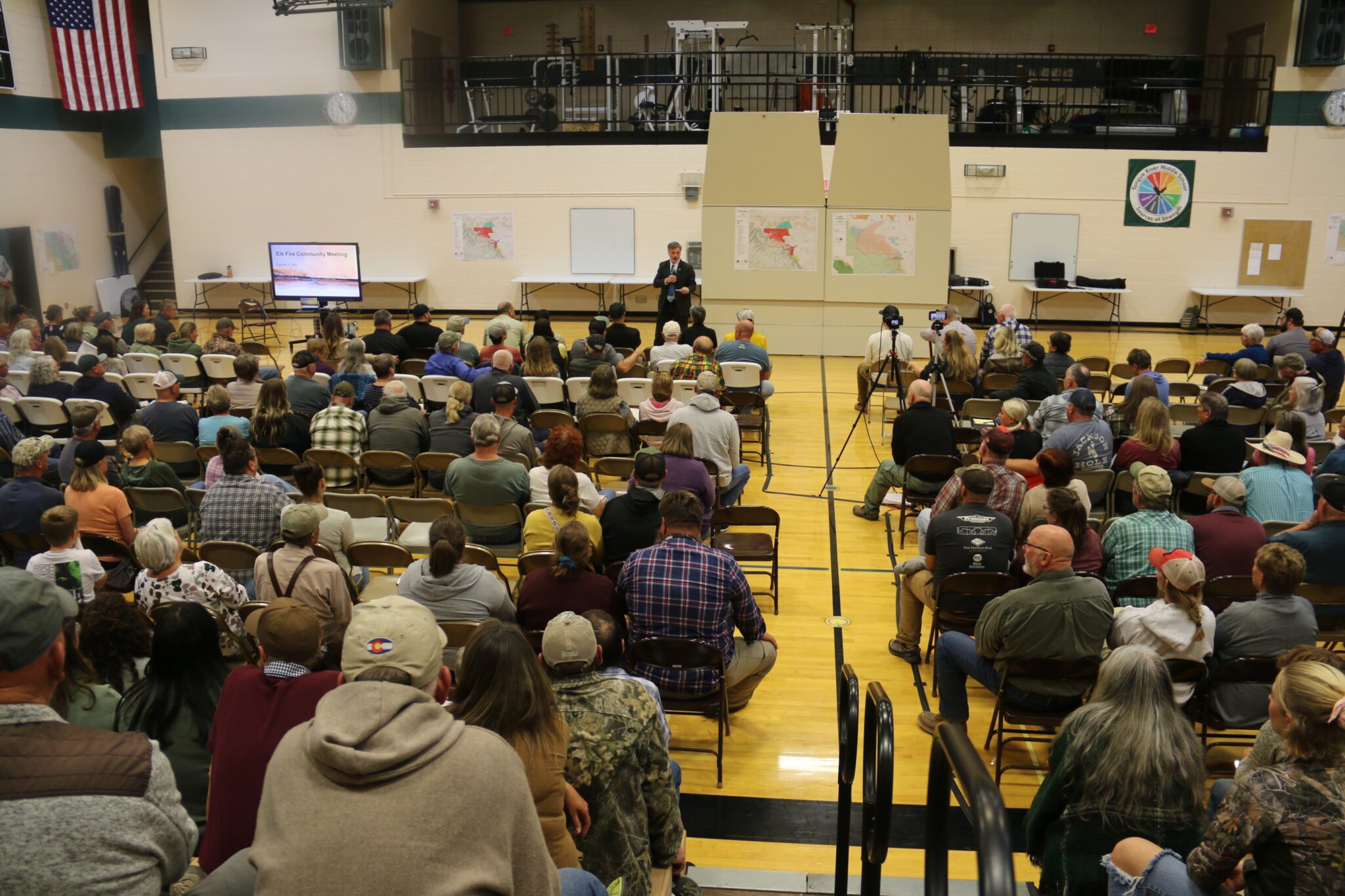
Northern Sheridan County residents who wanted to know what’s going on with the Elk Fire, had their first chance Wednesday night (October 2nd), to hear from various emergency responders and from Wyoming’s Governor.
Several hundred residents attended a public meeting at Tongue River Middle School in Ranchester, to get the latest updates regarding firefighting efforts and what to do if they need to evacuate.
As of 9pm Wednesday, the fire has burned more than 37-thousand acres of land, is 0% contained and has jumped US Highway 14 in some areas in the higher elevations, plus it has gone around Steamboat Point.
Evacuation orders have been given for all residences in the Tongue River Canyon, Pass Creek Road and Twin Creek Road west of Parkman, all residences from the X-X Ranch north to the Montana State line, and Horseshoe Subdivision.
Those residences east of the intersection of Tongue Canyon Road and Amsden Road, the Eagle Ridge Subdivision and all residences directly adjacent to the east of US Highway 14 going up the mountain, are under an evacuation warning and should prepare to evacuate if needed.
The town of Dayton, residences in Little Horn Canyon and those in the Parkman area north from Railroad Avenue to the Montana State Line are under an evacuation advisory.
Jon Warder is a Fire Management Officer in the Bighorn National Forest.
He says residents need to prioritize what they can take with them should they have to evacuate.
If time permits, there are ways to help fire crews if they can get to where the fire is threatening a residence.
“The best folks can do is protecting their own structures before fire gets there, by removing fuels, by just reducing yard clutter, those are the main things that can help and then identifying any water sources in advance that firefighters can take advantage of, those are fantastic things to do. The more you can do in advance, the better.”
It has also been announced that the Bighorn National Forest is now closed from Red Grade Road northward.
Sheridan County Emergency Management Coordinator Jesse Ludikhuize says when it comes to issuing evacuation advisories, warnings and orders, a lot of it is dependent on the weather and fire behavior.
“We try to plan ahead depending on what the weather is doing and then our meteorologist forecast that’s going out and then we also try to predict where that fire may go and if it’s even remotely possible that it’s threatening a community, then we will put them in the ready phase, so that they start to think about what they need to do, to get ready to go.”
Ludikhuize adds if a fire grows too fast or the weather makes it change directions, a step in the evacuation ladder may have to be skipped and those affected could get little to no advanced warning.
Meanwhile, Wyoming Governor Mark Gordon did a fly-over on the west side of the fire, before attending the public meeting.
He says in some instances the National Guard can be used in firefighting efforts, but it’s not that simple, and because of some of the terrain, that idea may not work.
“The Incident Commander is the person that has to activate whatever Guard resources we have and I think people think that ‘well, we’ve got soldiers, they can get up there, they can do all the work.’ We’ve only got a few that are red card trained, but I got to tell you as somebody who has fought fire for my life, you get into some of that really tough terrain, like up in Pass Creek and some of that, it’s dangerous. What they have is all the resources the state can muster right now.”
A Wyoming Type 3 Incident Management team took over management of the Elk Fire this past Tuesday.
Click here to see an update on the Elk Fire
Click here to watch a replay of the public meeting
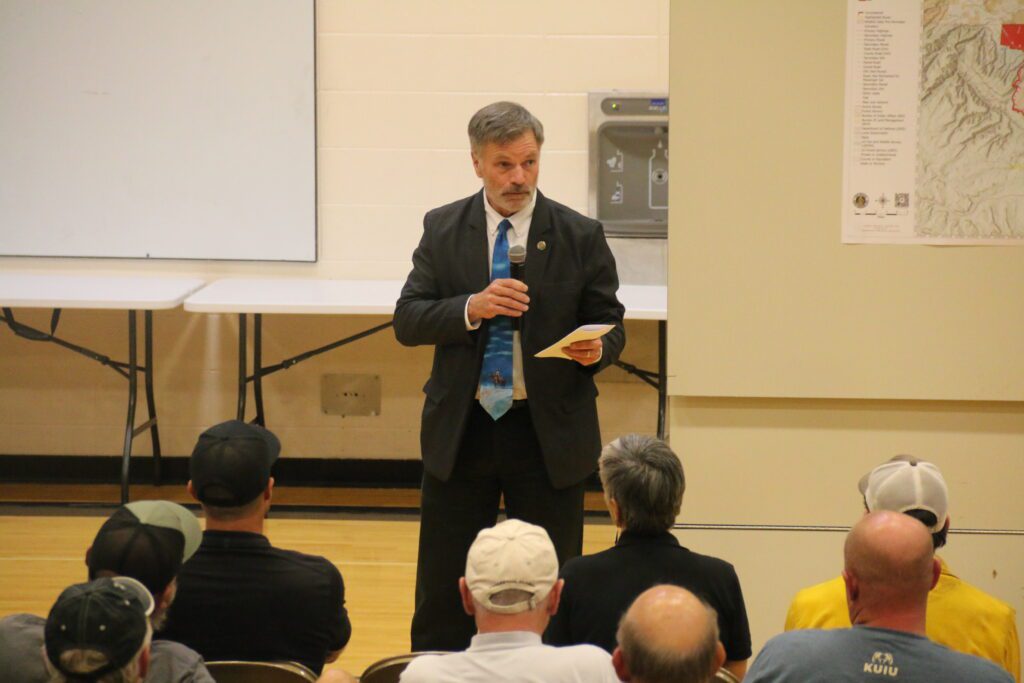
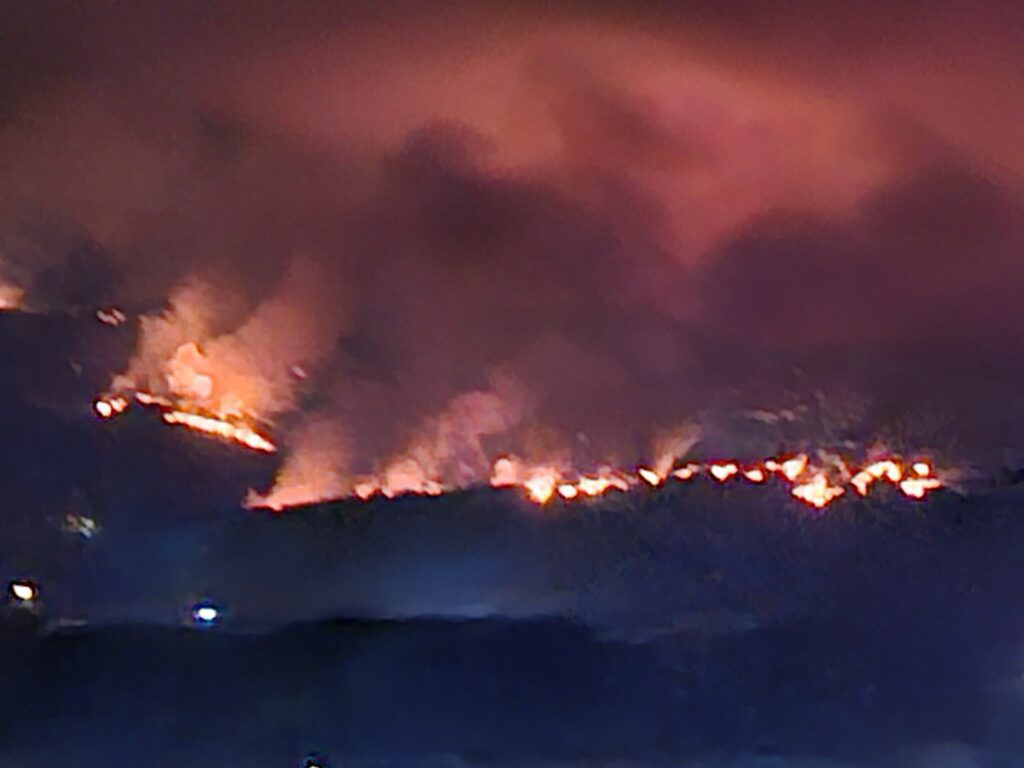
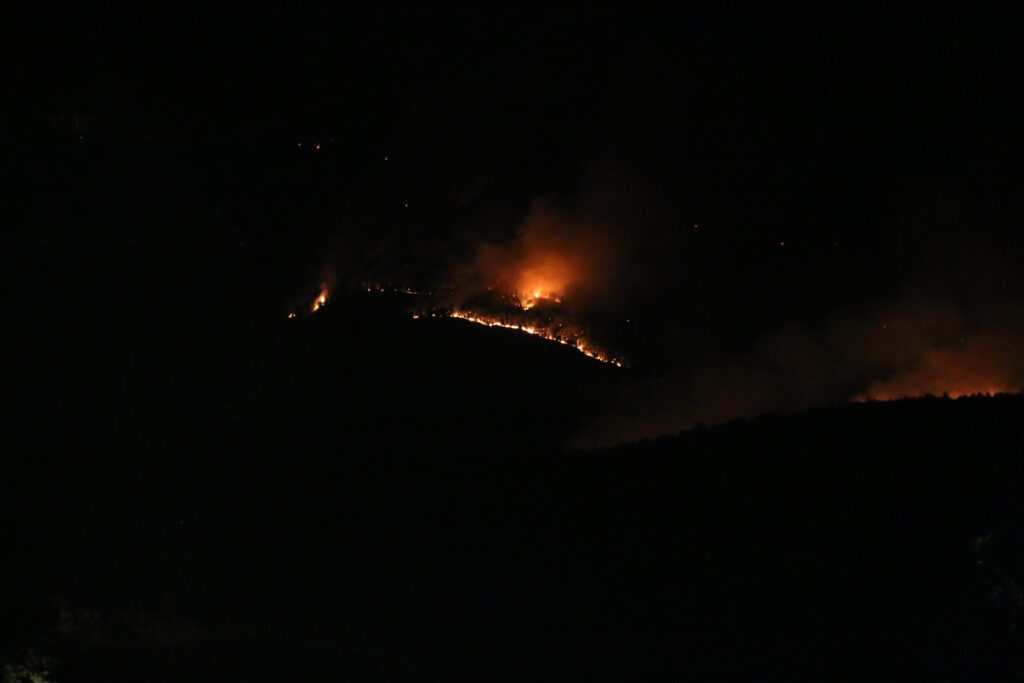
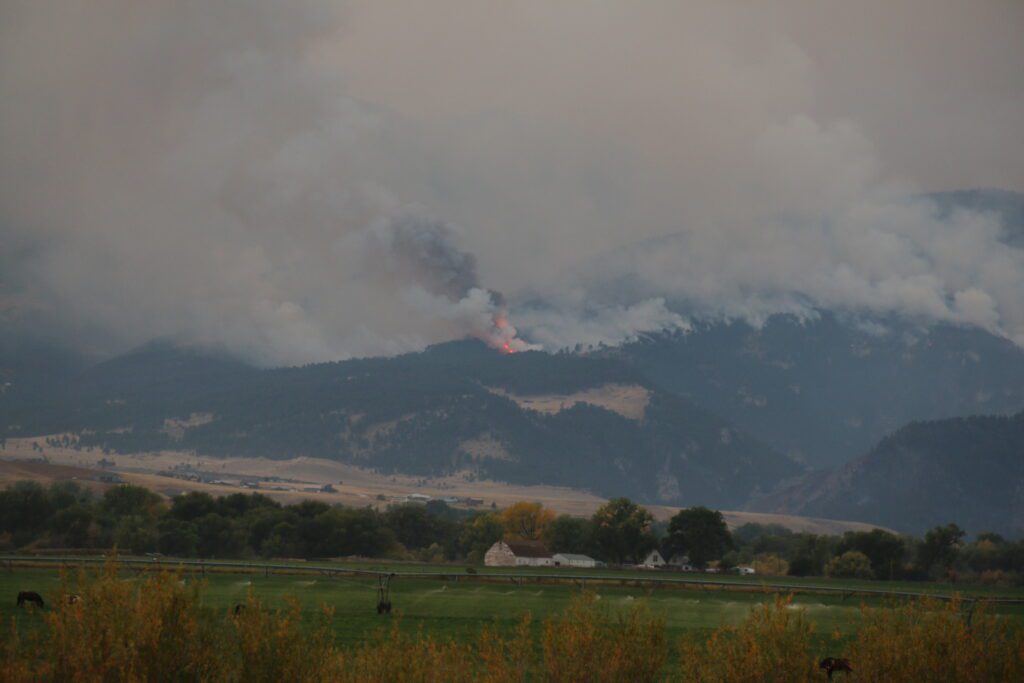


Mark Steingass
October 3, 2024 at 10:39 am
More specialty wildland firefighting equipment and resources are needed…2-3 years ago Barrasso came to the Senate floor and stated that a Federal Firefighting Force was needed…whatever happened to that idea?…if Barrasso and his peers can’t get the job done then the Wyoming State government needs to step up to the plate and figure out ways to put out fires in a more timely manner….Grass fires can be “knocked down” efficiently but you need manpower, water and the equipment to get the job done.